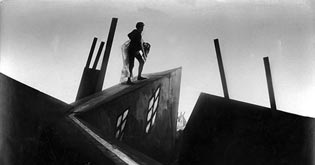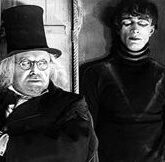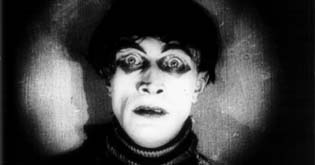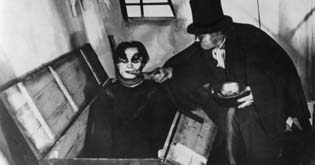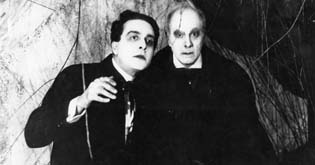Live Recording by Wilfried Kaets
Short and Sweet
The Cabinet of Dr. Caligari is a German feature film directed by Robert Wiene, released in 1920. This expressionist silent film is considered one of the milestones in film history.
The film tells the story of Dr. Caligari, who exhibits a somnambulist named Cesare at a carnival, allowing him to perform clairvoyant feats. Two friends attend the performance together, and one of them is murdered the following night after Cesare predicts his death. It is revealed that Caligari is a madman who uses Cesare as a murder instrument. However, the film takes an unexpected twist (not originally intended by screenwriter Carl Mayer): the entire narrative is revealed to be a delusion of an inmate in a mental asylum, with Caligari being the director of the asylum—now aware of how he can treat the truly insane.
Action
The inner plot of this expressionist silent film classic tells the story of the mad Dr. Caligari, who, with the help of a somnambulist named Cesare, terrorizes a small North German town. By day, Caligari presents Cesare, who suffers from a strange, trance-like illness, at the carnival. There, the tall, gaunt, and pale somnambulist predicts the future for the spectators. By night, however, this servant of Caligari prowls the town and commits horrific murders under his master’s influence. When a young man is murdered one night, a victim of Cesare’s prediction of imminent death, Francis, a friend of the deceased, suspects that Dr. Caligari is involved.
When Francis’s girlfriend Jane is threatened and abducted by Cesare, suspicion turns to certainty. An angry mob sets out to hunt down the fleeing doctor. In a lunatic asylum, it seems Francis has cornered the showman, only to make a horrifying discovery: the mad Dr. Caligari is the director of the institution…
Musik
New Music for Organ and Live Electronics: Wilfried Kaets
The music attempts to connect historical film-music dramaturgical approaches and structures from the silent film era with a new compositional perspective.
Based on the old techniques of improvisation, composition, and compilation, it both adheres to the music-dramaturgical principles of silent film musicians (e.g., regarding chosen leitmotifs or the musical-motivic binding of film sequences to scenes and acts…) and offers a glimpse into contemporary compositional practices through new sound qualities (colors, harmonies, lines, speeds, rhythms, spatialities, etc.).
The world premiere of Wilfried Kaets’ new music particularly utilized the special sound-technological live-electronic capabilities of the restored organ in the Rochus Church in Cologne-Bickendorf; it can also be realized in alternative versions on other “normal” church organs or on the piano.
The originally romantically designed pipe organ of the Rochus Church, since its restoration in 2000/01, features technical possibilities that are likely not available on any other traditional church organ in Germany at present: the combination of pipe sound with electronic and sampled colors; humanly unplayable densifications or speeds through electronic control of the pipe work; MIDI-ization of graphical data (such as the sonification of figures or architectures from silent films); and sound projection in spatially changing movements through 6-channel speaker control are some of the new possibilities in the traditionally experimental Rochus Church in Cologne-Bickendorf.

